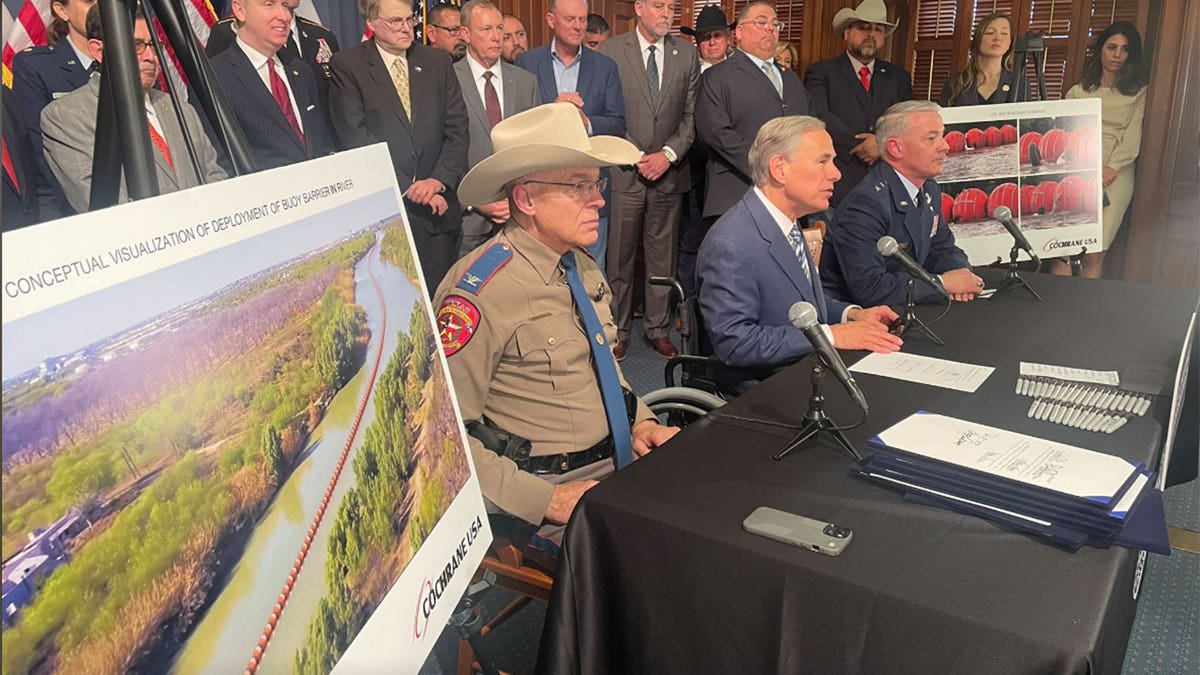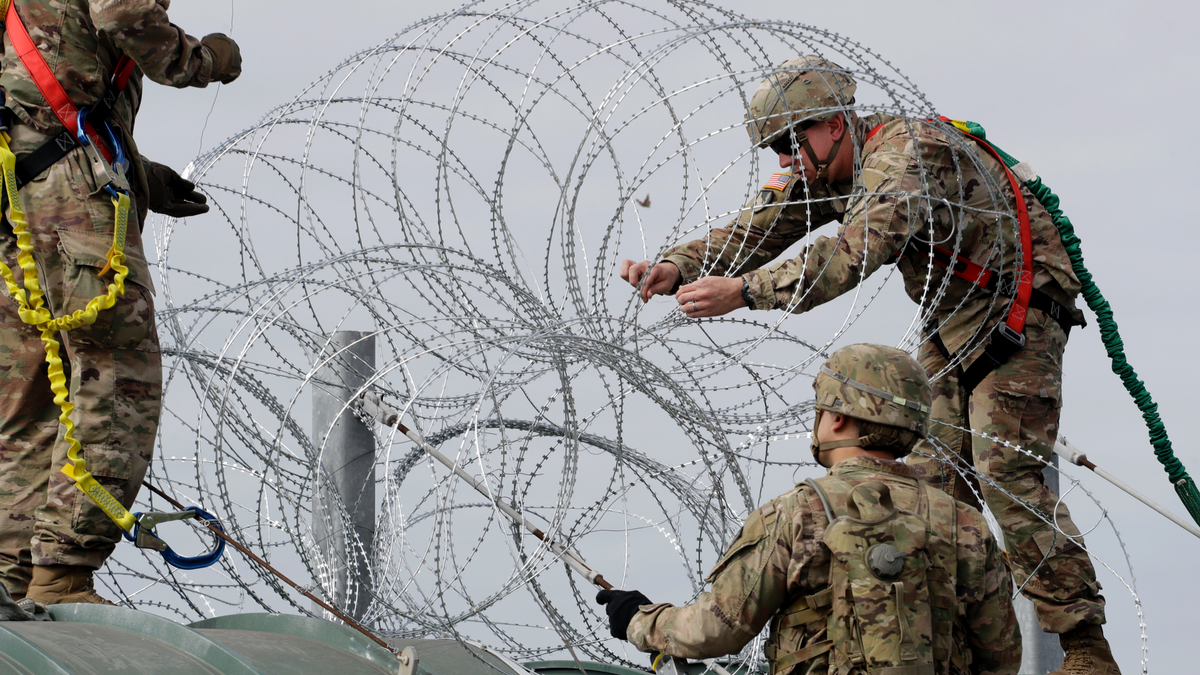In the past couple of years the Texas National Guard and state authorities have placed over 100 miles of razor wire at some of the most critical migrant crossing points along the southern border. The state, which makes up over 60 percent of the U.S. border with Mexico, has spent well over $10 million erecting and maintaining these border barriers as part of its larger multi-billion-dollar border enforcement campaign “Operation Lonestar.”
This week, a federal appeals court ruled against the Biden administration’s attempt to block Texas from continuing to place walls of razor wire – also called concertina or “c-wire” – along the border. This comes after U.S. Border Patrol agents under the Biden administration cut down Texas’ wire on a 26-mile stretch of the border in September 2023.
Earlier this year, Texas Governor Greg Abbott, a Republican, said that “Biden should be thanking Texas, not obstructing our efforts to secure the border.”
“Joe Biden completely abandoned his constitutional duty to secure the border. Texas stepped up in his absence to build the wall, repel illegal crossings, and protect our country,” said Abbott.
HEARTBREAKING VIDEO SHOWS 10-YEAR-OLD MIGRANT LEFT ALONE AT BORDER

Texas Gov. Greg Abbott announce the deployment of an inflatable barrier along the Rio Grande River on Thursday, along with a six-bill package he signed to bolster border efforts. (Gov. Greg Abbott’s Office)
But does razor wire really keep migrants from entering the country illegally, and is it worth the cost?
Andrew Arthur, a law and policy expert at the Center for Immigration Studies, says the answer is an emphatic “Yes.”
He pointed to data from U.S. Customs and Border Protection that shows illegal migrant encounters in Texas’ five border sectors dropped by nearly two-thirds in January after the state finished placing wire.
Arthur told Fox News Digital that Texas began placing wire fortifications in May 2023 after the COVID-era measure Title 42 expired. Then, after the migrant surge in December, Texas deployed additional guard personnel, state troopers and resources to the border.
“Based on the numbers that we’re looking at here, it is most definitely effective,” he said.

Members of the U.S.military place razor wire along the U.S.-Mexico border on the McAllen-Hidalgo International Bridge, Friday, Nov. 2, 2018, in McAllen, Texas. (AP Photo/Eric Gay)
INCOMING BORDER CZAR HOMAN ISSUES WARNING IN TEXAS TO DEMS OPPOSING TRUMP DEPORTATIONS: ‘DON’T TEST US’
“What the wire did from my reading of this is it shifted that flow west,” he explained. “And that’s important, because that’s a much longer route. You’re adding hundreds of miles to that smuggling journey.”
While effective, razor wire is not without drawbacks. More than a traditional border wall, wire needs to be constantly monitored. It also requires regular upkeep and additional wire being laid down after old wire is damaged or destroyed.
“It’s a temporary solution, because you’re going to have to replace the concertina wire that they have and, at some point, they’re not going to be able to keep sending wave after wave of troopers, because a lot of those guys are hundreds of miles from their homes, because Texas is a big state,” he explained. “When I was embedded with a trooper down there, he was from Abilene, which is nowhere near the border, and he had been there for six weeks.”

A Texas National Guard soldier stands on patrol near the banks of the Rio Grande on April 2, 2024, in El Paso, Texas. (Photo by Brandon Bell/Getty Images)
There are also humanitarian considerations.
Arthur said that by being an effective deterrent, razor wire protects migrants from attempting the dangerous crossing over the Rio Grande.
Meanwhile, Dylan Corbett, who runs an El Paso-based migrant aid and advocacy group called the Hope Border Institute, said that the presence of c-wire along the border has increased migrant injuries and deaths.
Corbett told Fox News Digital that doctors working with the Hope Border Institute have had to treat the wounds of families injured by the wire, as well as “wounds caused by projectiles fired by the National Guard.”

Venezuelan immigrant Louis Sanchez asks Texas National Guard troops to let his family pass through razor wire after they crossed the Rio Grande from Mexico on September 27, 2023, in Eagle Pass, Texas. (John Moore/Getty Images)
CLICK HERE TO GET THE FOX NEWS APP
“In El Paso, nearly our entire border has been fortified by layers of concertina wire, including part of our border with New Mexico,” he explained. “While the numbers of border deaths along the whole border appear to have gone down over the past year, in El Paso they have increased. That increase has been sharp over the past couple years and coincides with the presence of the Guard and the concertina wire, because it is forcing border crossers just to the west of the city, where they die in the desert or crossing the river.”
He called for the federal government to finally step in and “assert its supremacy over managing migration at the border and fix our overall system.”
“More people are dying here than ever before,” he said. “The longer we wait, states will continue to engage in uncoordinated and irresponsible enforcement actions on their own, unnecessarily putting lives at risk and needlessly diverting millions of dollars in taxpayer resources.”


